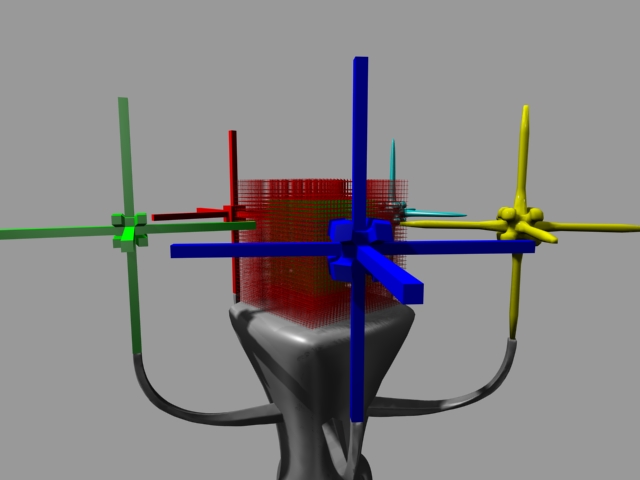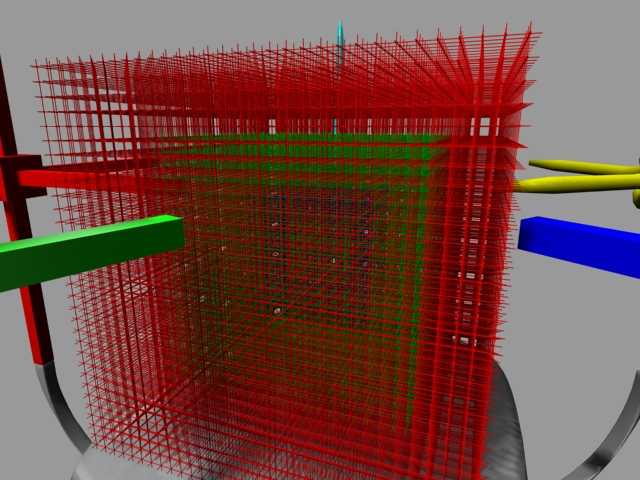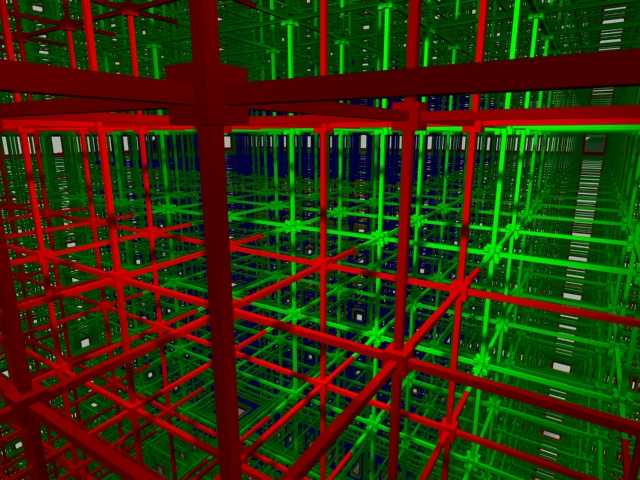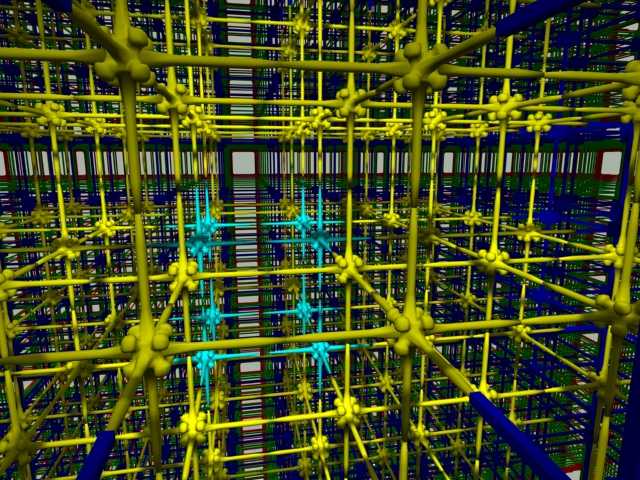



LOCATION in the Virtual Sculpture Park (DAAP)
COMMENTAIRES DE L'ARTISTE
Five nodal
shapes surround a cubic array composed of these five base nodes. These
nodes slowly move from a simple rectangular form to a more organic
shape. The outmost red nodes of the array compose the first five rows
of the cube. Next the green node continues in toward the center cube
for five additional rows. Then blue nodes for three rows. Blue is
followed by Yellow for two rows. Finally there are four cyan nodes at
the center of the object making a cube of four objects. These five base
nodes increase in complexity, from a rectangular shape to a more
complex organically smoothed object.
Red –
5 5 - 10
Green – 5 5 – 10
Blue –3 3 – 6
Yellow – 2 2 – 4
Cyan – 1 1 – 2
Green – 5 5 – 10
Blue –3 3 – 6
Yellow – 2 2 – 4
Cyan – 1 1 – 2
32x32x32 - (2^15) - 32728 - cubic_node_array
preface –
letter to jurors
What would
it feel like to travel through landscape of evolving nodes?
cubic_node_array began as a very simple exploration of the landscape
required to simulate MC Escher's "Cubic Space Division" –1952. A quick
search on the web will undoubtedly find many similar investigations.
This project then became a question of realizing an exponential
increase in objects and detail. Arguably a procedural approach that
creates geometry as the function of camera position would be more
efficient at creating the illusion of traveling through a never-ending
sea of nodes. For convenience I choose to position a number of
different objects.
I am very
interested in the art being produced within the confines of current
rapid prototyping technology. Obviously an array of 32728 objects is
not reasonable for consideration and well beyond the reasonable file
size requested. As with my previous Intersculpt submissions I have
deviated slightly from the contest rules and have submitted a
low-resolution version and a mpg movie. I have submitted this work to
contribute to the discussion.
As our
machines continue to be used as tools of design how does this change
our vocabulary and our ability to create new objects? A high-resolution
scan of a person can arguably be more realistic and life like than hand
modeling a person from photographs in the computer.
Computer
aided design is continuing to evolve. I would argue that “cyberealism”
has permeated many aspects of design. Fields as diverse as art,
industrial design, architecture, graphic design increasingly rely on
the computer as a tool.
Do we
gain something when the machines pre-visualize our reality? Or are we
subject to new restrictions in the process of actualizing form. These
investigations are beyond my experience. It is my hope that this
discussion will continue to grow and produce exciting work. I exist in
a practical world of computer-based design where the illusion is many
times more important than truth and beauty and the methodology for
creating images continues to evolve.